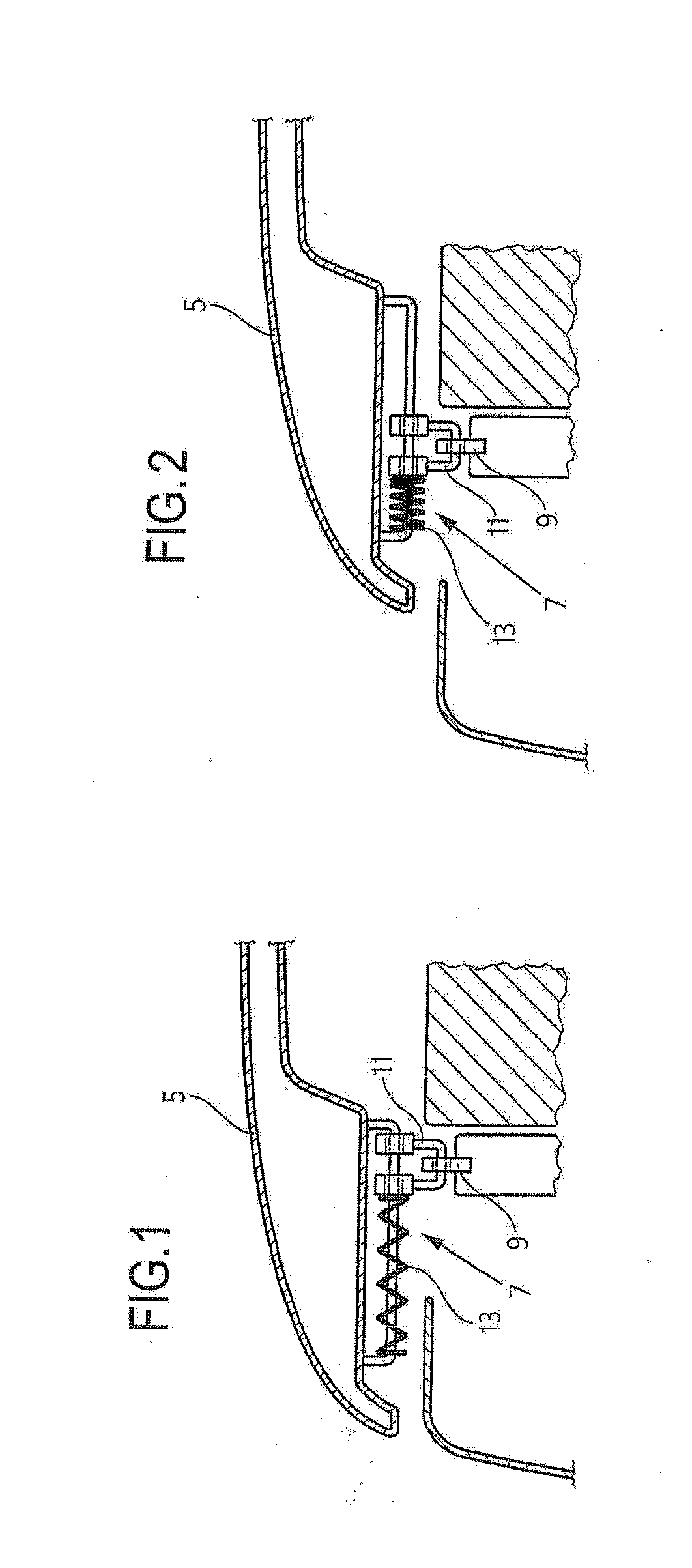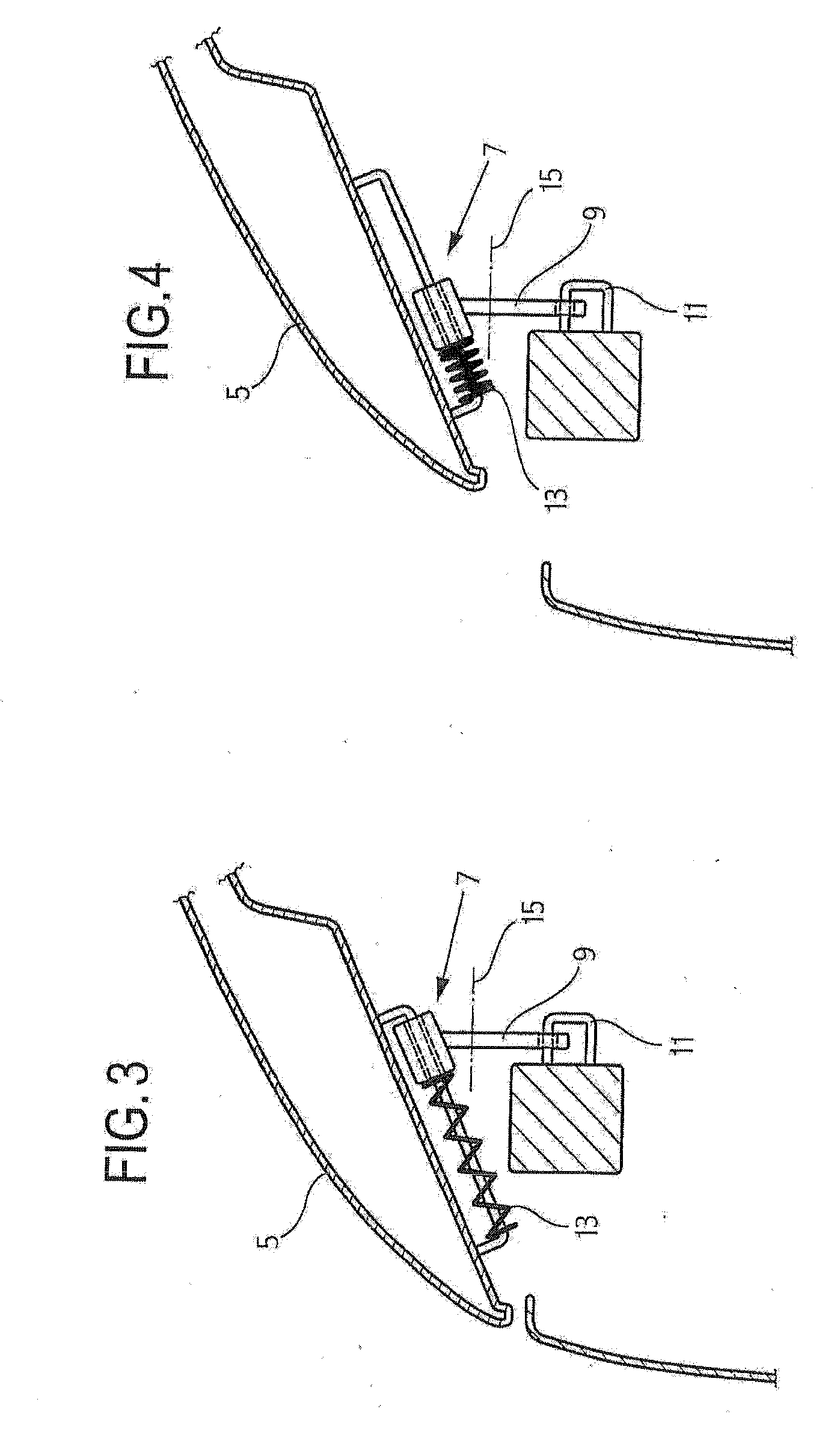Method and arrangement for fully automatic function checking of internal combustion engines
a technology of internal combustion engines and function checks, applied in the directions of vehicular safety arrangements, pedestrian/occupant safety arrangements, transportation and packaging, etc., can solve the problem that the solution often cannot be implemented
- Summary
- Abstract
- Description
- Claims
- Application Information
AI Technical Summary
Benefits of technology
Problems solved by technology
Method used
Image
Examples
Embodiment Construction
[0017]All depictions according to FIGS. Ito 4 show the front section of a bonnet 5, a guide device 7 that is arranged in the front end area thereof, and a locking device, which comprises a locking hook 9 and a clip 11 as essential components. In addition, other adjoining components, which are not referenced, specifically, a front body edge, a part of a front end, and the engine package, are shown.
[0018]FIGS. 1 and 2 show a first embodiment, FIG. 1 depicting the starting position, i.e., the normal operating state, and FIG. 2 showing the conditions in the bonnet 5 that is displaced backward. According to this embodiment, the clip 11 is arranged in the guide device 7, so that it passes from the position shown in FIG. 1 to the position according to FIG. 2 when the bonnet is displaced backward. In addition to the frictional forces in the guide, only the force of a compression spring 13 counteracts this movement. During the entire displacement travel, the relationship between the locking ...
PUM
 Login to View More
Login to View More Abstract
Description
Claims
Application Information
 Login to View More
Login to View More - R&D
- Intellectual Property
- Life Sciences
- Materials
- Tech Scout
- Unparalleled Data Quality
- Higher Quality Content
- 60% Fewer Hallucinations
Browse by: Latest US Patents, China's latest patents, Technical Efficacy Thesaurus, Application Domain, Technology Topic, Popular Technical Reports.
© 2025 PatSnap. All rights reserved.Legal|Privacy policy|Modern Slavery Act Transparency Statement|Sitemap|About US| Contact US: help@patsnap.com



